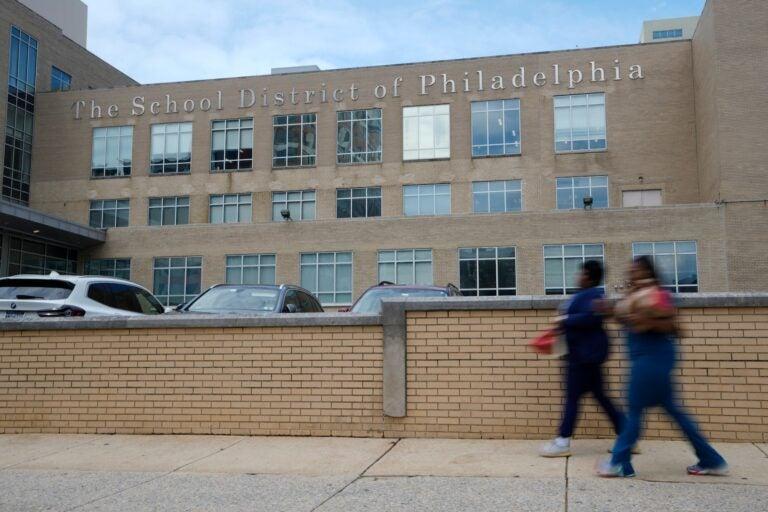Philadelphia Educators Review Six-Month Progress of Revised ELA Curriculum
Half a year after PhiladelphiaŌĆÖs public schools introduced a revamped English Language Arts curriculum, the school board has gathered to evaluate its preliminary effects on student learning and engagement. Teachers have observed notable changes in classroom interactions, with a stronger focus on analytical thinking and inclusion of a wider array of literary voices. Early reports reveal encouraging trends such as:
- Higher reading comprehension rates among middle school learners
- Broader integration of texts reflecting diverse cultural backgrounds
- Increased collaboration among educators through specialized training sessions
Nonetheless, obstacles persist in achieving uniform implementation and equitable resource distribution district-wide. Certain schools face challenges adapting instructional plans to meet varied student needs and securing adequate materials. The board is actively investigating these issues, as illustrated by the following comparative data from participating schools:
| Indicator | Before Curriculum | After 6 Months |
|---|---|---|
| Average Reading Scores | 72% | 78% |
| Student Engagement | 65% | 74% |
| Teacher Satisfaction | 60% | 68% |
Educators Share Insights on Classroom Dynamics and Student Participation
Teachers throughout Philadelphia have noticed a shift in how students interact with English Language Arts since the curriculum update. Many attribute a surge in enthusiasm for reading and writing to the curriculumŌĆÖs focus on diverse narratives and culturally relevant materials. Interviews with educators reveal that students are more eager to engage in discussions and draw connections between literature and their own lives. However, some educators point out the increased preparation time required and the challenge of balancing standardized testing requirements with fostering creative expression.
Engagement varies across grade levels and school types, highlighting the curriculumŌĆÖs differentiated impact. Elementary educators appreciate the hands-on activities and multimedia tools that captivate younger learners, while secondary teachers value the emphasis on critical analysis and writing skills. Below is a summary of feedback from various grade groups, outlining strengths and areas for improvement:
| Grade Level | Strengths | Challenges |
|---|---|---|
| Elementary |
|
|
| Middle School |
|
|
| High School |
|
|
Literacy Outcomes Reflect Progress Amid Ongoing Equity Challenges
Data collected six months into the new English Language Arts curriculum implementation reveals a complex picture of literacy development across PhiladelphiaŌĆÖs schools. Standardized assessments show a significant rise in reading comprehension scores among third and fifth graders, yet improvements in writing skills and vocabulary remain modest. Educators credit the curriculumŌĆÖs inclusion of culturally relevant texts for increased student engagement during reading activities. However, disparities in access to supplementary materials and varying levels of teacher familiarity with the curriculum continue to influence results in some areas.
Further analysis points to achievement gaps linked to socioeconomic status and funding disparities. The table below summarizes key literacy indicators from the first semester:
| Metric | Baseline (Pre-Curriculum) | After 6 Months | Improvement |
|---|---|---|---|
| Reading Comprehension | 62% | 71% | +9% |
| Writing Proficiency | 58% | 60% | +2% |
| Vocabulary Usage | 55% | 57% | +2% |
District educators emphasize several critical points:
- Interactive read-aloud sessions have driven notable gains
- Focused professional development is essential to boost writing instruction
- Equitable distribution of resources is vital to close achievement gaps
- Continuous evaluation and curriculum refinement are necessary to maintain progress
School Board Reviews Expert Guidance for Enhancing ELA Curriculum
The Philadelphia School Board is carefully considering recommendations from a panel of education specialists who have monitored the new English Language Arts curriculumŌĆÖs rollout. Experts advocate for a balanced literary selection that combines timeless classics with contemporary works, ensuring representation of diverse student backgrounds while maintaining academic rigor. They stress the importance of expanding teacher training focused on culturally responsive pedagogy and incorporating student input to make content more relevant and engaging.
Highlighted suggestions include:
- Broaden the range of diverse literary voices to better reflect underrepresented communities.
- Strengthen interdisciplinary links by connecting ELA lessons with history and social studies topics.
- Adopt ongoing assessment tools to provide real-time insights into student progress and learning gaps.
- Enhance professional development through workshops on innovative teaching strategies.
The board plans to deliberate these proposals in upcoming meetings, aiming to optimize student engagement and academic outcomes.
| Recommendation | Anticipated Benefit |
|---|---|
| Diverse Literature | Greater cultural relevance and student connection |
| Interdisciplinary Integration | Improved critical thinking and contextual understanding |
| Continuous Assessment | Timely identification of learning needs |
| Professional Development | Enhanced instructional effectiveness |
Final Thoughts on PhiladelphiaŌĆÖs ELA Curriculum Progress
As PhiladelphiaŌĆÖs school board continues to analyze the effects of the new English Language Arts curriculum after six months, ongoing input from teachers, students, and families will be crucial in guiding future improvements. Recognizing literacy as a cornerstone of academic achievement, the districtŌĆÖs dedication to tracking progress and addressing challenges highlights the need for flexible, evidence-based approaches in education reform. Stakeholders eagerly anticipate further data and insights that will shape decisions aimed at equipping PhiladelphiaŌĆÖs students with essential skills for success in an evolving world.








